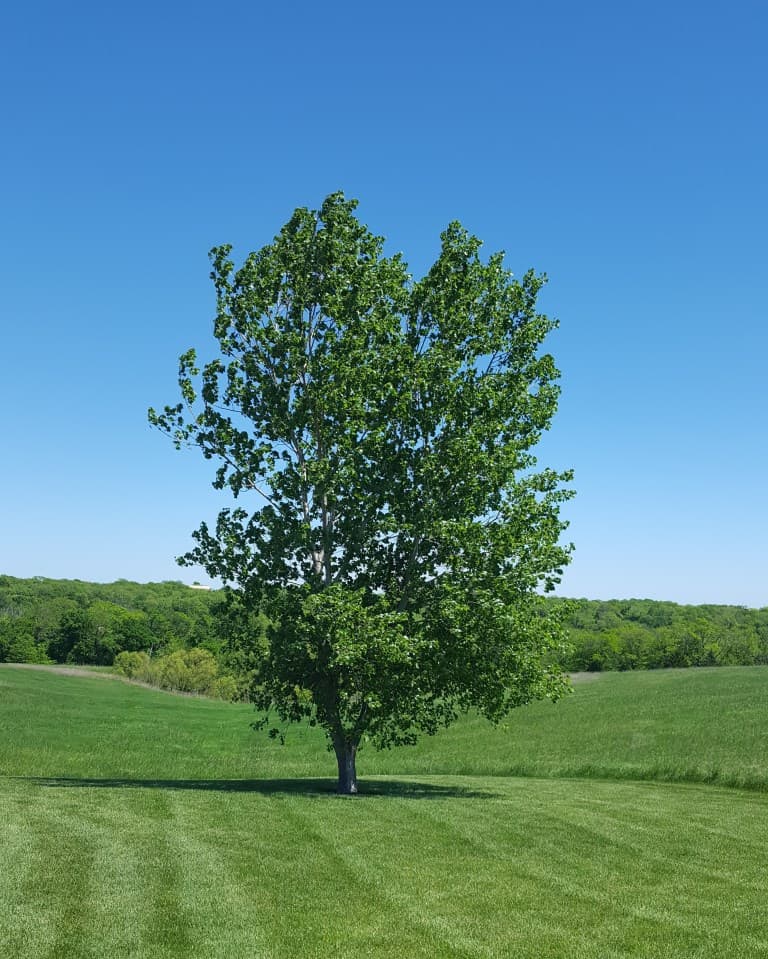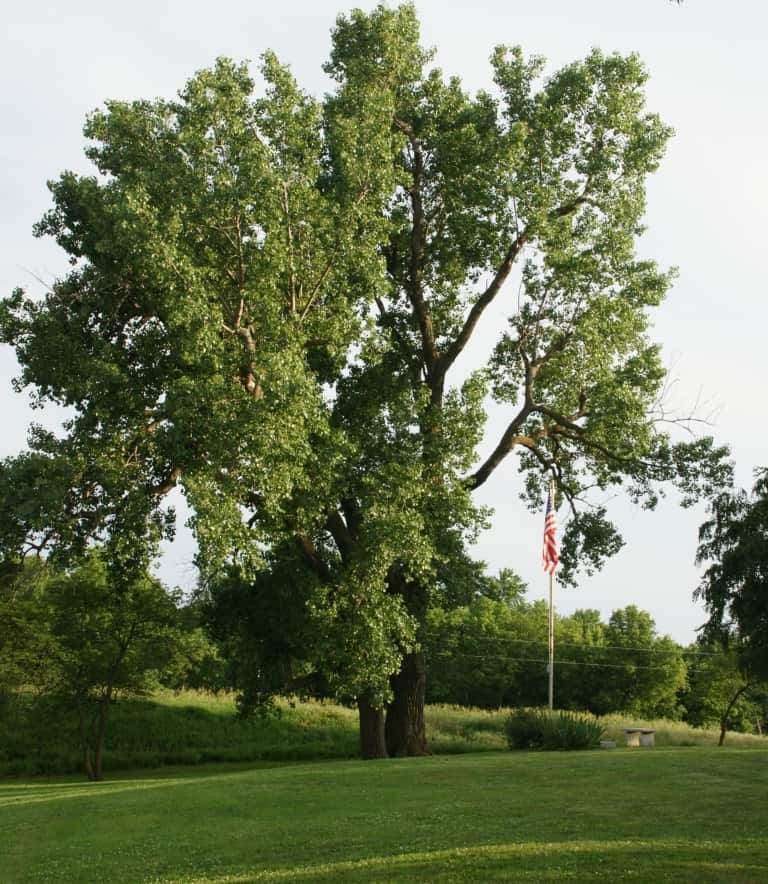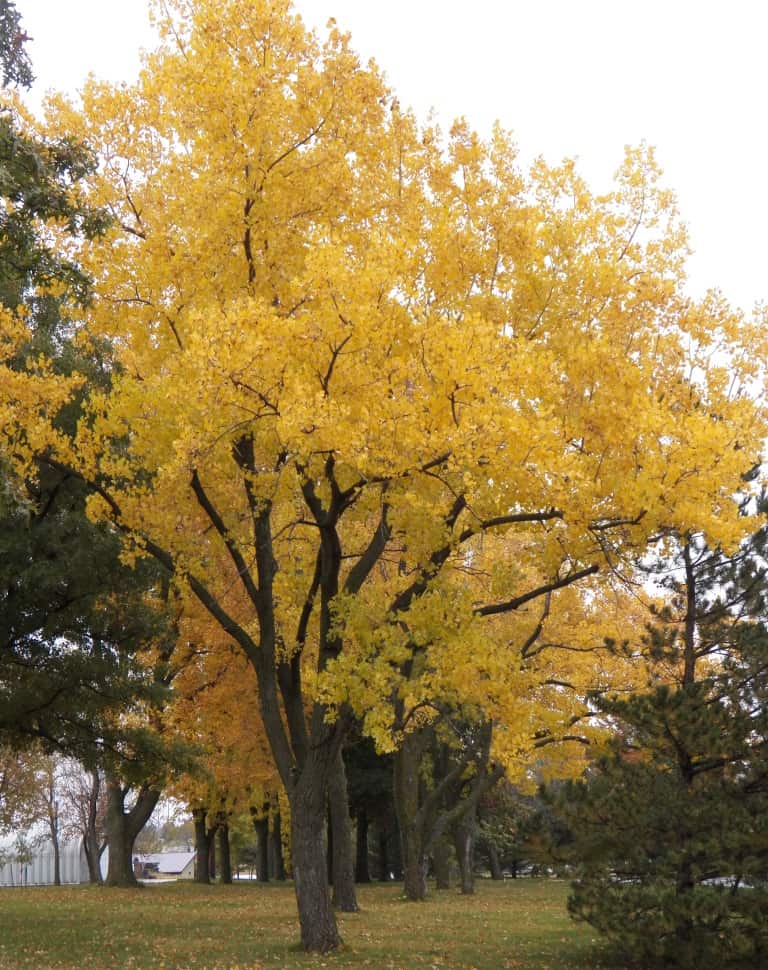With Kansas Day over and done, we think back to the symbols of our state. What is mightier than the cottonwood, the tree that towers over the Great Plains? The Eastern Cottonwood, Populus deltoides, is the symbol tree of Kansas because of its tough nature and survivability. The cottonwood grows where it should not, survives fires, floods, tornadoes, and drought, and is a resilient member of the Kansas family. Yes, the cottonwood to me is family.

I have long been a true Kansan, a lover of prairies and shade, honest and kind, tough and unyielding, and a friend to all; just like the cottonwood. My early memories lead me to the shade of the cottonwoods in our creek-bottoms, where my siblings and I played under its branches. We hunted for morels in spring and oyster mushrooms in fall among the cottonwoods along the Republican River. And now, after moving to the northeast corner of the state, I have 2 large cottonwoods in my yard, shading me in the morning and playing the air with their tattling leaves.

Although the cottonwood does not have the musical ability of the quaking aspen (Populus tremuloides), it still has its own musical enrichments. And even though it is a large and quite messy tree, it is a wonderful addition to the landscape. I would recommend a cottonwood to the landscape, and here is why.

Cottonwoods are great shade trees. They grow fast, but slow down as they get older. Yes, they can be weak in spots and may lose branches regularly, but if planted the proper distance from the house, no damage should occur. Remember that proper pruning on all trees can help correct poor branch angles and trunk development. Cottonwoods, like the aspen, make music in the seemingly unending Kansas winds. Cottonwoods are tough, like I said above, they can withstand nearly every natural disaster, and certainly everything in Kansas. They have great fall color-when we get moisture in August and September, we have great fall color on everything, however, cottonwoods nearly always turn a bright shade of yellow. And some cottonwoods have reddish colored new growth in the spring.

Cottonwoods are host to a variety of insect species including pollinators. Butterflies such as the viceroy, mourning cloak, and the eastern tiger swallowtail all use it as a food source for their caterpillars. The cottonwood dagger moth and numerous other moth species feed on it. There are also a variety of insects that feed on it, including aphids (which are eaten buy lady beetles and lacewings), and beetles including the cottonwood leaf beetle.

Yes, you may have to deal with the dreaded cotton if you have a female tree, but it is no worse than the helicopters of the overplanted silver maple (Acer saccharinum), or the huge leaf and seed drops of sycamore (Platanus occidentalis), or even the nuisance seeds of sweetgum (Liquidambar styraciflua). You can try the male cultivar ‘Siouxland’ or other cultivars on the market if you really do not want to have cotton from your own tree.
So take another look at the Kansas state tree, the Eastern Cottonwood. And enjoy the shade!
Happy planting!



Andrew
Thanks for another excellent article on my favorite tree! My Dad (rest his soul) was one of the ignorant masses who condemn the tree for its largely imagined faults. Yet, if not for his foolish removal of my boyhood Cottonwood, I may not have developed the deep interest in trees I now possess.
We lived along the Little Calumet River in Chicago until 1974. Our yard boasted Cottonwood, Weeping Willow, Silver Maple, Boxelder, Ash (spp.), Italian Plum, Sour Cherry, Viburnum and Honeylocust. Across the river, I marveled at species which included Eastern Cottonwood, Bur Oak and others. (I love Bur Oaks.)
One of my favorite magazines in the 80s was “Kansas!”. Along with Audubon, Arizona Highways, North Dakota Outdoors and a couple of others, your state magazine extolled the virtues of trees, including Cottonwood. It was always satisfying to read good things about a tree my Dad dismissed as “a worthless scrub that can’t make it past fifty years”. Author Kathleen Cain awarded it a better appellation: “American Champion”.
I would like to share other positive words about “our tree”, but hesitate to. I say this because I have already complimented three or four on-line authors without any response. (One guy wrote about the virtues of Boxelder.) With your permission I will do this, but I for now will leave you with these stirring words of Charles S Sargent, first director of Harvard’s Arnold Arboretum:
“With its massive pale stem, its great spreading limbs and broad head covered with pendulous branches covered with fluttering leaves of the most brilliant green, Populus deltoides is one of the stateliest and most beautiful inhabitants of the forests of North America.”
Cheers and God bless!
Steve Labriola, Phoenix, AZ
Steve
Thank you for your comments! My love and passion for all plants, but maybe especially trees, was nurtured with my grandparents. They had collected and grown a wide variety of trees on their Cloud County farm, as well as other flowers and plants. They would take me mushroom hunting along the Republican River and we would always seek out large cottonwood trees to find the most morels. I marveled at them then as I still do now. A few years ago, I had the opportunity to cut down a large, old cottonwood that was in the way of a new pond to be. Doug Grimm and I cut down that tree, then counted the rings as best we could, it was over 150 years old!
Long story short (too late), I am blessed to be living in a state that considers the cottonwood to be important.
Thanks again,
Andrew Mitchell
Andrew,
Kind of late, but I just saw your response: THANK YOU!
God bless,
Steve & Vicki Labriola, AZ
Regarding my above post: I had the text separated into paragraphs, but it ended up only in one… Steve
Hello! My name is Sirena and I am an intern with Indiana Phenology, a 501(c)(3) non-profit dedicated to citizen science and data collection across Indiana. I am interested in using an image from this post in an educational phenophase photo guide I am working on. Please email me at [email protected] to get in touch! Best, Sirena